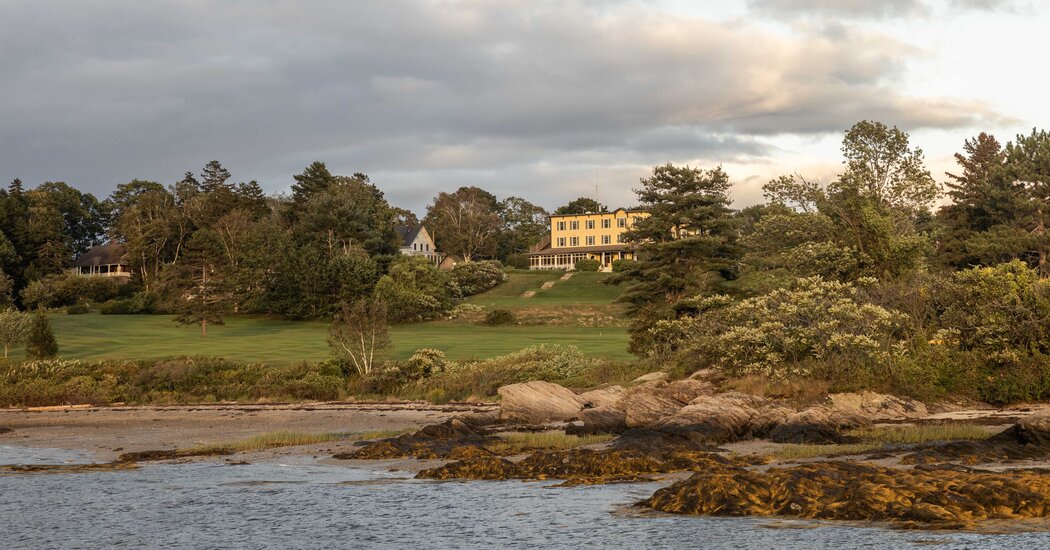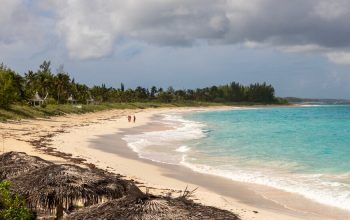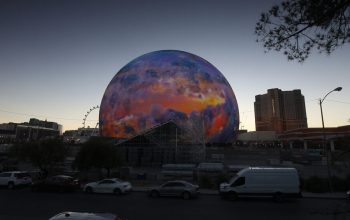T’s monthly travel series, Flocking To, highlights places you might already have on your wish list, sharing tips from frequent visitors and locals alike. Sign up here to find us in your inbox once a month, and to receive our weekly T List newsletter. Have a question? You can always reach us at tlist@nytimes.com.
Visitors often come to Portland, Maine, for the first time because they want to spend a summer weekend in a quaint city by the water, or because they’ve heard about the city’s superlative seafood (80 percent of the United States’ lobster comes from Maine). Seduced by the easy access to nature and relative affordability, many return for longer stays or even for good. Between 2020 and 2022, Maine’s population had the highest percentage increase of any New England state.
But Maine’s desirability is nothing new. Artists, artisans and writers have long gravitated to the state; they established an art colony with two schools of painting in Ogunquit, on Maine’s southern coast, in the first half of the 20th century, and the Haystack Mountain School of Crafts on Deer Isle, which was founded in 1950, continues to draw instructors and students from around the world. More recently, the state’s creative spirit has resulted in a dynamic food scene. Turn down any one of one of Portland’s cobblestone streets and you’ll find more quality restaurants and bakeries (of both the old- and new-guard varieties) than you might expect in a place with just 68,000 year-round residents. The same is true just northeast of the city, in the mid-coast region, especially in the town of Rockland — an easy and scenic 90-minute drive away — which has a burgeoning food and art scene on track to rival Portland’s.
Kazeem Lawal, the owner of the clothing and accessories store Portland Trading Co., moved from New Jersey to Portland 14 years ago, and has witnessed its stratospheric growth from a small port town to a destination city. “It’s a bit like the Brooklyn of 20 years ago, with old and new coexisting,” he says. “and it’s continuing to grow and evolve, as all cities should and do.”
Here, Lawal and three other Mainers share their favorite spots in and around the state’s largest city.
The Insiders
Alex Day, a co-owner of Death & Co. cocktail bars (with locations in New York City, Los Angeles, Denver and Washington, D.C.), moved to Portland in 2019.
Lily King, the novelist, has lived in Portland since 2002.
Kazeem Lawal, the creative director of the clothing and accessories store Portland Trading Co., moved to Maine in 2009.
Toshiko Mori, the architect and principal at Toshiko Mori Architect, divides her time between New York City and a home on an island in Maine’s Penobscot Bay.
“Before my husband and I moved to Maine, we tested out all the lodging options in Portland. I like the AirBnBs in Munjoy Hill, but if going the hotel route, The Francis is my favorite spot — comfortable, centrally located, tastefully curated, and the home of one of Portland’s coziest restaurants, Wayside Tavern.” (Rooms from $129 a night) — Alex Day
“Best Bower is a contemporary guesthouse at the top of Munjoy Hill with six warm, lovely rooms and rotating works of art by artists-in-residence. Blind Tiger in the West End, whose billiards room was once a prohibition speakeasy, offers more luxury; and out on Chebeague Island there’s the magical Chebeague Island Inn, where drinks and dinner are served on its wraparound porch.” (Rooms at Best Bower from $165 a night, two-night minimum; Blind Tiger, from $259 a night; Chebeague Island Inn, from $219 a night) — Lily King
“I prefer new hotels, and the Canopy Portland Waterfront is two blocks from downtown. Spring for a room with a view of the water, and plan on a drink at the rooftop bar.” (Rooms from $199 a night) — Kazeem Lawal
“In Rockland, 250 Main is extremely pet-friendly. The hotel provides dog treats from Loyal Biscuit Co., a great pet supply store that’s just down the street. Rooms are simple and comfortable, with harbor views and excellent coffee from its neighbor Rock City Coffee Roasters.” (Rooms from $169 a night) — Toshiko Mori
“Smalls, a tiny neighborhood cafe-bar and supply store in the West End, cranks out some of the best coffee and small plates around. On lazy Sundays, I cruise by for a cappuccino, then walk up to Zu Bakery for a textbook croissant. And J’s Oyster is the perfect combination of old-school charm, a fun team and delicious seafood that couldn’t be fresher.” — A.D.
“It’s hard to eat a bad meal in Portland. Dok Mali is my current favorite restaurant. Opened less than a year ago by the chef and owner Nonglack Thanephonesy, [this Thai restaurant] is new enough that you can still get a table in high season. I’m utterly addicted to her drunken noodles.” — L.K.
“If you want the Ferrari of lobster rolls, go to Eventide. The buns are steamed, the lobster meat is doused with brown butter, reservations are extremely limited and when they tell you how long the wait for a table is, you’ll probably pass out. Go early, put your name in and then spend the hourslong wait exploring. If lobster’s not your thing, the fish and chicken sandwiches here are also poppin’.” — K.L.
“Leeward, a restaurant with Italian-style seasonal food, focuses on pasta, but the menu also highlights local seafood, such as Maine bluefin tuna crudo with pickled rhubarb, or a cucumber salad with smoked eel, sumac and fried capers that’s fresh and earthy.” — T.M.
Explore
“A short walk from our house, the Fore River Sanctuary, a series of hiking trails meandering through forests and marshland, is a lovely retreat from the hustle of town. I like starting from Jewell Falls and wandering toward the Fore River. The deep banks as you near the end are the remnants of an 1800s canal that connected Portland to Sebago Lake.” — A.D.
“Board a ferry on Commercial Street and visit any of the Casco Bay islands. Or, if you want to see them all, book a ticket on the mail boat. It runs three times a day (at 10 a.m., 12 p.m. and 3 p.m.) and the ride takes two and a half to three hours. Absorb it all: the teams working on the boat, the fisherman navigating their boats in Portland’s harbor, the beauty of Maine’s rocky coast.” — K.L.
“The Farnsworth Art Museum in Rockland has an in-depth collection of works by [19th- and 20th-century] Maine artists, including Winslow Homer, Andrew Wyeth and Louise Nevelson, as well as the work of young contemporary artists. Across the street (behind Atlantic Baking Company, which makes an excellent apricot-pistachio cookie) is the Center for Maine Contemporary Art, housed in a building I designed. It has temporary shows of work by artists living or connected to Maine, including Reggie Burrows Hodges and Lois Dodd.” — T.M.
Shop
“I can lose an hour at the knife and kitchenwares store Strata flipping through books, admiring delicate Japanese glassware far too thin for my clumsiness or — as one should do here — talking with the fantastically knowledgeable and friendly staff about the shop’s huge collection of culinary knives, largely crafted by Japanese smiths. I’ve yet to convince my husband that a knife-sharpening workshop is an acceptable date night.” — A.D.
“For antiques, drive 20 minutes north to Cabot Mill Antiques in Brunswick, which is a multidealer antiques mall in an old mill building. Or drive out to Arundel, to the Arundel Antique Village. At both places, you’ll find things that are hard to come across in most big cities.” — K.L.
Take Home
“I consulted the shopping expert in my life, my daughter Eloise King-Clements. She says Blanche + Mimi has the best quilts ever, like the block-printed ones made from soft cotton.”
— L.K.
“In Rockland, Trillium Soaps is a family-owned small-batch producer of handmade soaps subtly imbued with the fragrance of nature found in Maine. My favorites are the pine, Maine seaweed, black rosemary and orange calendula soaps, and I can’t live without Trillium’s gardener’s soap, which has poppy seeds and cornmeal as an exfoliant, calendula petals, geranium and cedar oil to keep your hands soft after gardening. The store also carries antique farm baskets, ceramics and linens.” — T.M.
Practical Matters
“One of the reasons I moved to Portland is the convenience of our little airport. It rarely has a T.S.A. line of more than a couple people. But in the busy summer months, when flights get atrociously expensive, I fly in and out of Boston’s Logan airport. I’m generally pretty skeptical of taking a bus, but the Concord Coach arrives right outside baggage claim and heads directly to Portland [a two-hour trip], and on the way back, it drops you right in front of security. It’s cheap, clean and has very friendly drivers and Wi-Fi.” — A.D.
“Bring a book. At some point, even on the most dazzling summer day, you’re going to want to curl up on a hammock or porch swing or window seat and read. I don’t know if that feeling is in the water or the air, but it will overtake you. If you get a foggy day or two, you might need several books. Be prepared.” — L.K.
“The best times to visit are June and September. June is verdant, with amazing flowers, including lupine and lilacs, and it’s strawberry season. The air is clear and cool and you’ll be here before the tourists hit in July and August. In September, there’s the largest organic farming fair, the Common Ground Country Fair, and the Camden International Film Festival, the best documentary film festival — and it’s less crowded, and the weather is great for sailing.” — T.M.







